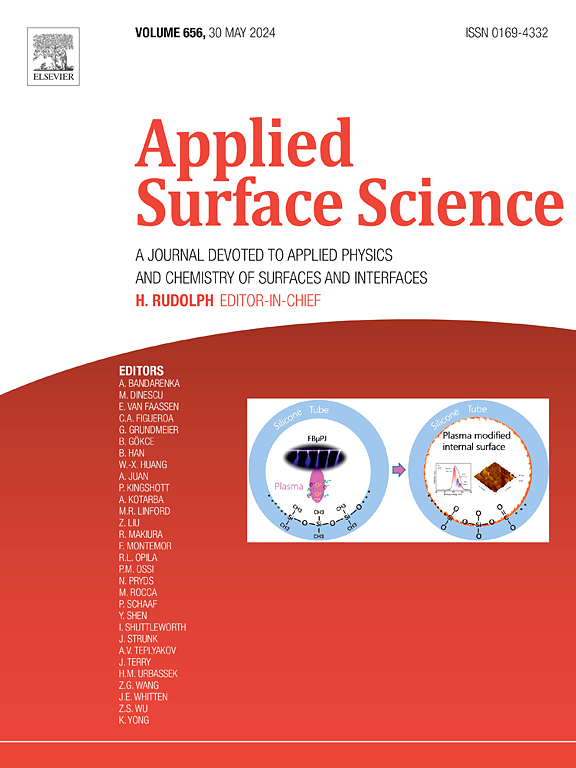通过“记忆效应”调节层状双氢氧化物中局部类酸微环境,增强中性介质中co2 - hcooh电催化作用
IF 6.3
2区 材料科学
Q2 CHEMISTRY, PHYSICAL
引用次数: 0
摘要
HCOOH被认为是电化学CO2还原反应(CO2RR)中一种高成本效益的产物。但由于析氢反应的竞争性,其转化效率和选择性仍制约着其工业应用。本文通过层状双氢氧化物(LDHs)的“记忆效应”特性对其局部微环境进行调节,实现了电化学CO2RR向HCOOH的高转化效率。原位光谱分析结果表明,在整个CO2RR过程中,所得的LDHs (LDH-RE)表面酸性较原LDHs增强,这是由于插层中CO32 -的部分回收和层间间距的减小所致,这对HCOOH在中性介质中具有较高的选择性有很大贡献。结果,LDH-RE在中性介质中,在−1.2 V条件下比RHE获得了95.7% %的高HCOOH法拉第效率。此外,原位ATR-FTIR和DFT结果表明,*HCOO的形成是LDH-RE表面HCOOH生成的速率决定步骤。本研究为电催化领域中LDHs启动子策略的研究提供了新的思路。本文章由计算机程序翻译,如有差异,请以英文原文为准。


Tuning local acid-like microenvironment in layered double hydroxide via “Memory Effect” to enhance the CO2-to-HCOOH electrocatalysis in neutral media
HCOOH has been regarded as a high cost-effectiveness product in electrochemical CO2 reduction reaction (CO2RR). However, its industrial application is still restricted by the conversion efficiency and selectivity due to the competitive hydrogen evolution reaction. Herein, by tuning the local microenvironment of layered double hydroxide (LDHs) via its “memory effect” characteristic, we realized the high conversion efficiency of electrochemical CO2RR towards HCOOH. In-situ spectroscopic show that the obtained LDHs (LDH-RE) show an enhanced surface acidity during whole CO2RR process compared with the original LDHs, which caused by partial recover of CO32– in the intercalation and the reduction of interlayer spacing, and the results make great contribution to the higher selectivity of HCOOH in neutral media. As a result, LDH-RE achieved a high HCOOH faradaic efficiency of 95.7 % at −1.2 V vs RHE in neutral media. Furthermore, in situ ATR-FTIR and DFT results demonstrate that the formation of *HCOO is the rate-determining step for the generation of HCOOH on the surface of LDH-RE. This work gives a new insight into the LDHs promotor strategy in electrocatalysis fields.
求助全文
通过发布文献求助,成功后即可免费获取论文全文。
去求助
来源期刊

Applied Surface Science
工程技术-材料科学:膜
CiteScore
12.50
自引率
7.50%
发文量
3393
审稿时长
67 days
期刊介绍:
Applied Surface Science covers topics contributing to a better understanding of surfaces, interfaces, nanostructures and their applications. The journal is concerned with scientific research on the atomic and molecular level of material properties determined with specific surface analytical techniques and/or computational methods, as well as the processing of such structures.
 求助内容:
求助内容: 应助结果提醒方式:
应助结果提醒方式:


